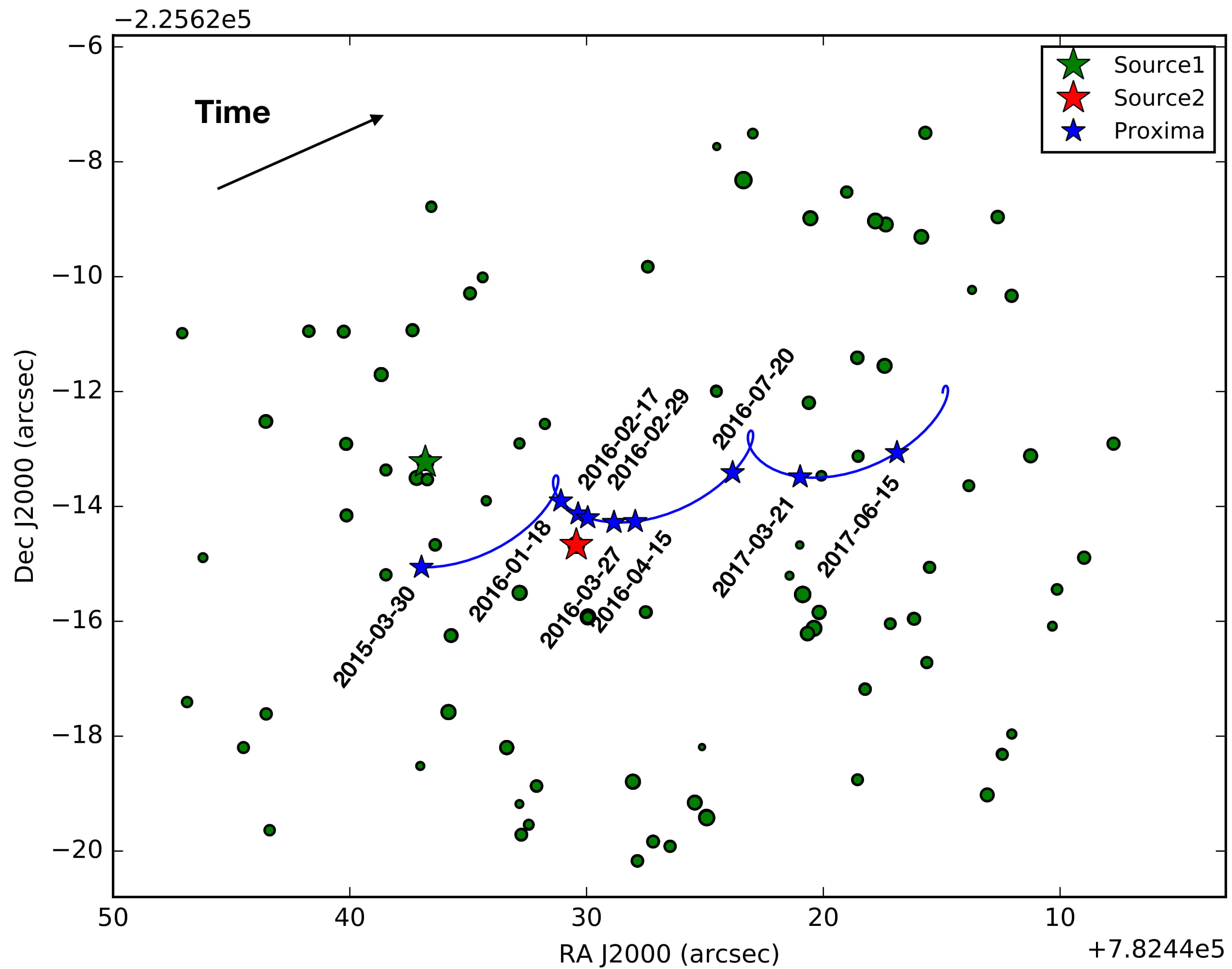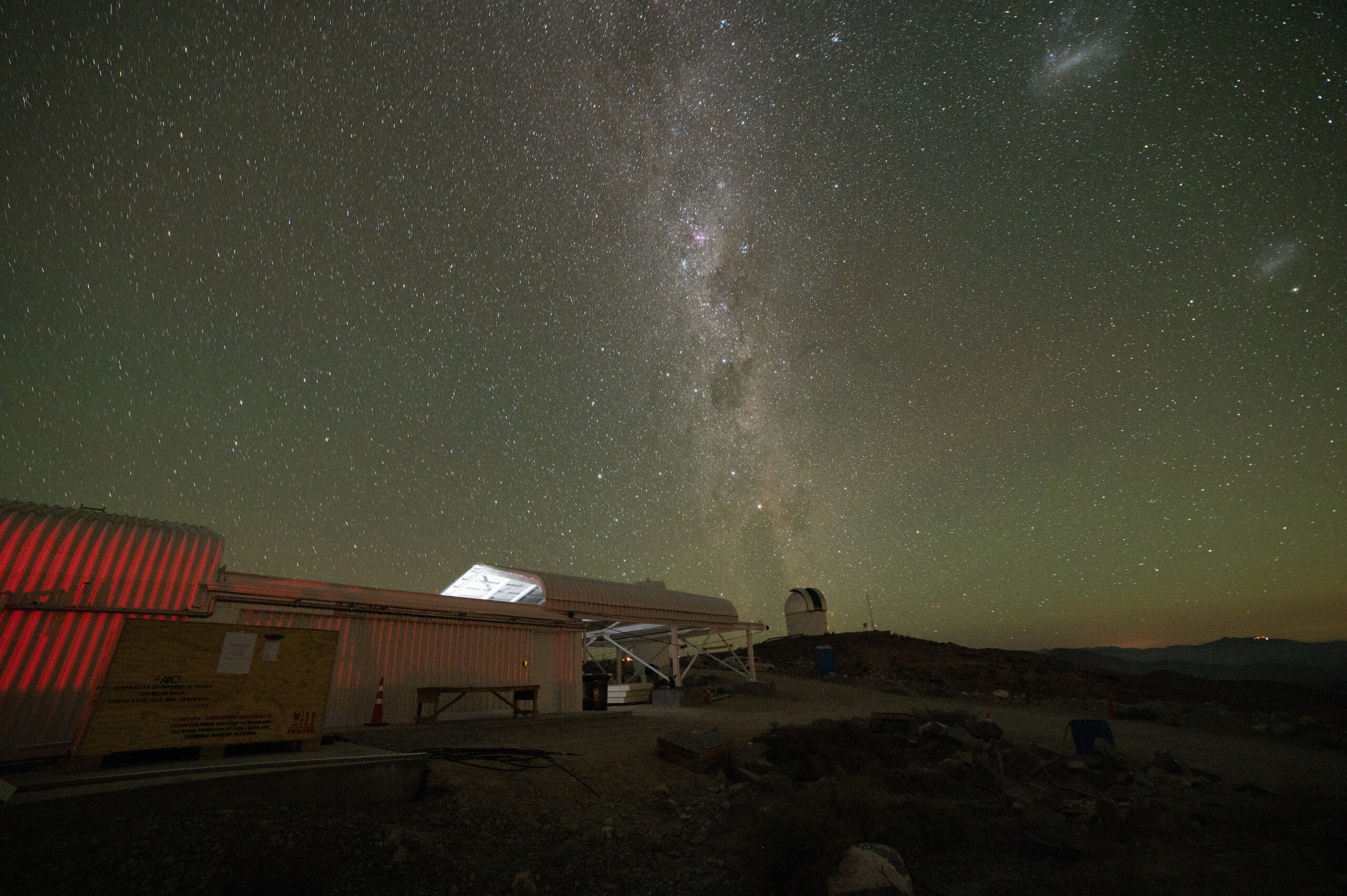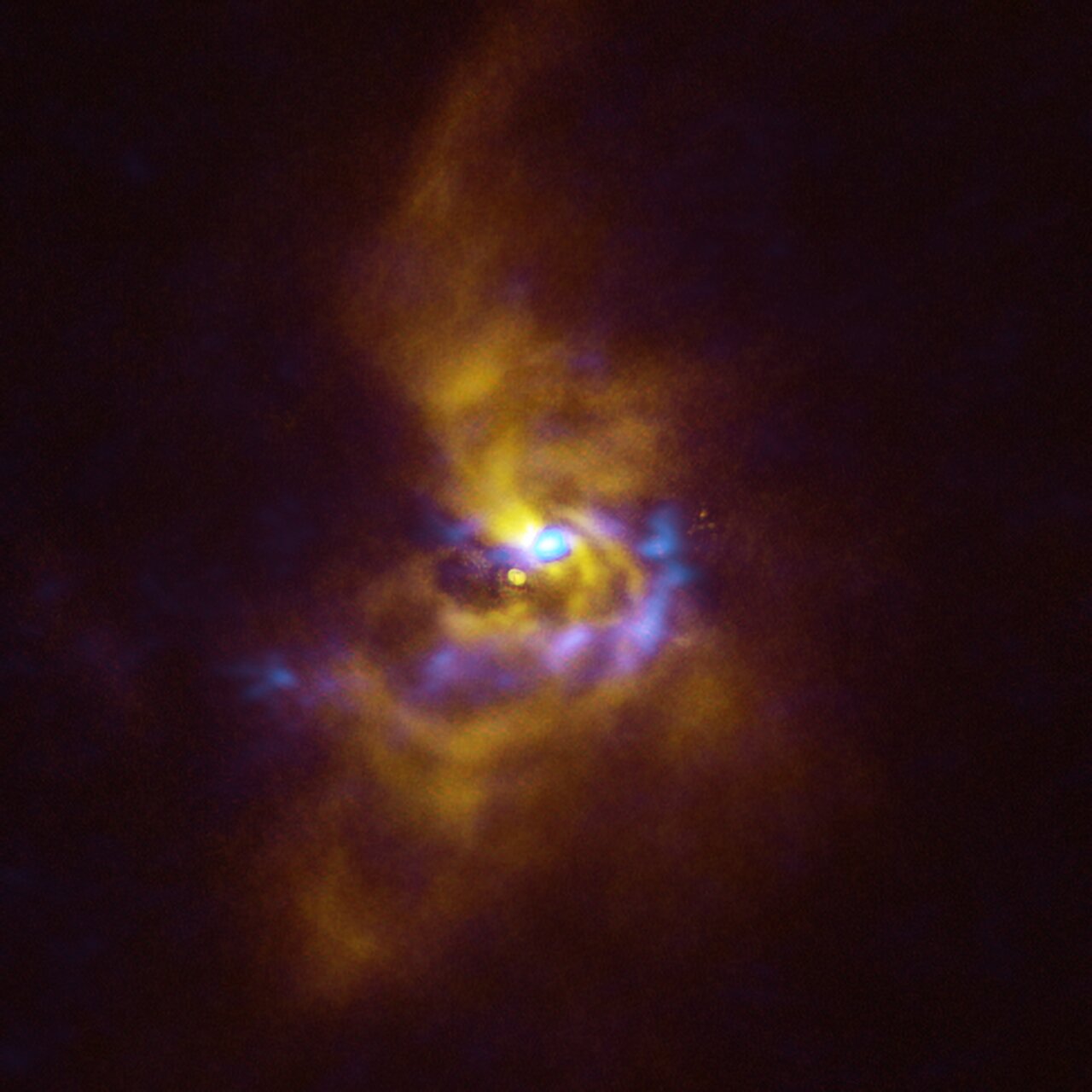
SPHERE performance permits many kinds of challenges, from measuring astrometric microlensing to image very faint planets
Alice Zurlo from the Astronomy Nucleus of UDP shows how with SPHERE we can learn more about exoplanets.
Paper published in Monthly Notices of the Astronomical Royal Society, Zurlo et al, 2018
Imaging radial velocity planets with SPHERE
Radial Velocity (RV) is one of the most productive technique to detect planets orbiting around other stars. A lot has been learned from RV surveys on the ground about exoplanets demography. However, the mass of the planet that is inferred from this technique is a lower limit. Because the inclination of the orbit is unknown and since RV measures the velocity along the line of sight, in some cases these planets could be larger and massier. Of interest is the possibility to obtain an upper limit of this mass by other means and other techniques, like for instance direct imaging. But planets detected by RV are usually old and cool and may not emit enough light to be directly observed… unless they are bigger than expected (meaning their orbital plane is far from edge one).
The team led by Alice Zurlo have selected 5 stars with known planets conveniently located (far enough from the host star) and massive enough too (5 to 10 masses of Jupiter) for expecting a detection with SPHERE. None of these planets were detected although the contrast in the images reached very large values. These stars turned out to be too old (>1 billion years), such that the achieved contrasts are corresponding in fact to masses of 25 to 28 Jupiter masses. These estimates allow to derive limits on the orbital plane inclinations of 10 to 20 degrees depending on systems. Overall, all these systems likely harbor actual planets below 13 Jupiter masses, the standard mass for an object to be a planet. The next generation of extremely large telescopes while increasing the angular resolution will definitely be more efficient for this type of study.
Paper published by the Monthly Notices of the Astornomical Royal Society, Zurlo et al, 2018










